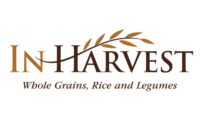The past few years have contributed elements that have combined into a “perfect storm” of challenges for grain-focused food companies like many of those across the snack and bakery industry. Domestically, challenging weather conditions, including droughts, have resulted in low wheat supplies. Then, Russia’s February 2022 invasion of Ukraine significantly complicated global grain supply chains. Add in ongoing complications related to labor and the persistent COVID-19 pandemic, and today’s business climate can look downright complicated.
Some of these variables are expected. Weather-dependent commodities like wheat face continual challenges. “Every year, there is some kind of challenge,” says Krishnakumar “KK” Davey, president, client engagement, IRI.
Agricultural commodities like grain inevitably post certain degrees of variability. Bakery companies often work with ingredient suppliers to mitigate ingredient—and supply-chain—challenges (see “Addressing rising wheat and gluten prices” on Snackandbakery.com for additional insights).
But not every agricultural challenge derives from the weather. “This year, I think that Russia and Ukraine, being the two big producers of wheat and corn, are posing some of our big grain challenges. In Ukraine, farmers plant grain in spring for a summer harvest, and then plant again in fall for a winter harvest. So clearly that has been affected.” The level of grain planting this year in Ukraine and Russia is still undetermined.
In recent years, other countries have increased grain acreage planted to meet increased global demand. But they, too, face challenges. “India in recent years was exporting 3 million metric tons plus of these products,” says Davey. “But now India has reduced grain exports because of the heatwave and other weather-related issues there earlier this year. So they do not have enough grains to export.”
The supply chain has remained an ongoing topic of interest. But Steve Nicholson, global sector strategist, grains and oilseeds, Rabobank, sees cause for optimism in his global grain supply-chain outlook. “If you just read the headlines of the paper, you would think that everything is stuck at a port—that everything has ground to a halt. We continue to see grains and oilseeds—corn, wheat, and vegetable oils—move around the globe. Buyers are doing what they need to do, and suppliers are doing what they need to do,” he reports.
“Having said that, that doesn’t mean that there aren’t hiccups,” says Nicholson. “It might be a ship that gets stuck for an extra-long time in a port because it can’t be unloaded.” Labor shortages continue to challenge myriad aspects of manufacturing and transportation. We are also still enduring outbreaks of COVID-19. “Freight is an issue,” he says. “We continue to see that as a problem. We don’t see that changing anytime soon. And certainly fuel costs are adding to those freight costs on top of that, so you’re getting fuel surcharges. You also have a supply chain that has been pushed and pulled and stretched.” This can result in “stops and starts” along the supply chain.
“We shut the world down because of COVID, the world started to come back, even in the middle of 2020, and certainly in 2021, off and on,” says Nicholson. “So, you had a demand pull that got really strong. Supply wasn’t up to that. The supply was geared to be very stable. But if you have an increase on the demand side, and then you have these business stops and starts. We’re still seeing that around the globe,” he says.
The ongoing war between Russia and Ukraine will continue to catalyze complications. While those countries had shipped a majority of their corn and wheat by the time the war started, the future is highly uncertain, notes Nicholson. “What will the supply situation look like from that part of the world?”
We have seen some promising progress in the area. “Ukraine is getting their corn crop planted,” says Nicholson. “Whether they get it out or not, I think, is the question.”
Overall, increased production will help support the grain supply chain in the coming years. “We’re expecting 15% to 20% increase in U.S. production,” says Davey. Eventually, supply will meet demand. “Other nations will try and produce more of the things that are going up in price. There is a market mechanism that will try to correct itself in the next six to nine months.”
A new development in talks between Russia and Ukraine arrived on July 22 with news that the two countries had signed an agreement to release more than 20 tons of grain that had been idle in Ukrainian Black Sea ports. Shipment are expected to begin by early August.
This development will positively impact current global supply levels of grains—particularly in countries that rely heavily on Ukrainian and Russian grain supply. This move will create necessary space to accommodate impending 2022 grain harvests in Ukraine, which will begin in September.





